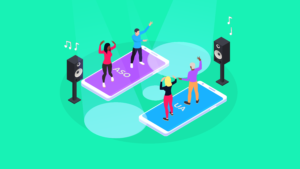
Author: Anna Priester
– Former App Marketing Content Specialist at Customlytics
Recently we published an article about Keyword Optimization (KWO) on our App Marketing Blog. In this article, we covered the first two steps of keyword analysis and keyword optimization (KWO) in detail: 1.) The research of suitable keywords for an app and 2.) the evaluation of relevant keywords to get the optimal set of keywords for which an app is ranked in the App Store and Google Play Store.
But there is another piece of the jigsaw needed for a successful keyword optimization: The correct use and placement of keywords when writing metadata that is used for the product pages in the App Store and Google Play Store. This step is crucial towards the end of the process as it enables an app to “carry” keywords within itself and also rank them in the App Store search.
Using the relevant keywords within the correct metadata assets can increase the visibility of your app by making the app appear higher up in the search results for all relevant keywords. In our eBook “App Store Optimization” you can find more information on this topic.
When deciding which keywords to place it is important to take the intended use of the app into consideration. As well as the app store in which the app will be published. The App Store and Google Play Store each have their own algorithm that is responsible for ranking an app for certain keywords and requires a different approach – just as in the first steps of keyword optimization.
In order to get started using keywords to create effective metadata for your app product pages, you should have a basic understanding of keyword ranking in iOS and Android:
In the App Store, only keywords in certain metadata assets trigger the search algorithm. Titles and Subtitles have a higher relevance for the algorithm.
In the Google Play Store, however, the entire app product page is indexed. All written components of the App Store page count for the keyword ranking. This includes the App Title, Short Description and the Long Description. Since there is no keyword field, the Play Store takes the keywords from the Description text. A word is considered a relevant keyword if it is mentioned at least 3-5 times in the text.
Furthermore, you can use emojis and HTML format for your text elements on the Google Play Store page – this is not allowed on App Store pages.
Now, we will go into more detail about the individual metadata assets, starting with the Title, Subtitle/Short Description, Promotional Text and ending with the Long Description. In the visual below you can see which metadata has a strong impact on the ranking in search results, browse results and the product page in iOS and Android.
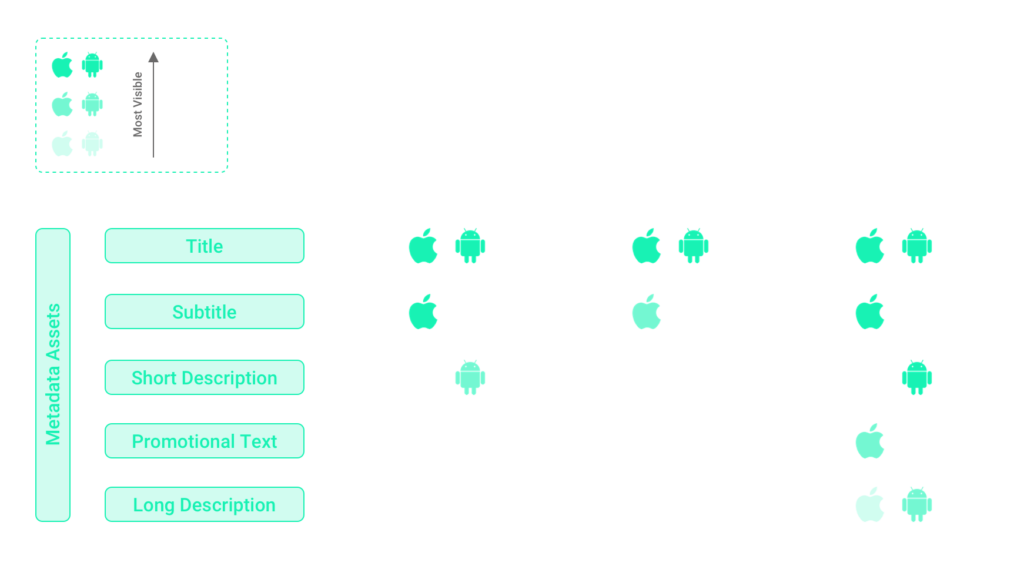
1.App Title
The Title and Description of your app play a crucial role in whether users discover and download your app in the leading app stores. The Title is the most effective of all metadata – keywords mentioned in the Title have a higher relevance for the algorithm.
So how do you come up with the ultimate Title that will reward you with numerous installs? You have a maximum of 30 characters for iOS and 50 characters for Android to present your app. You should use the terms that best describe the main function of the app, have a high search volume and increase the conversion rate. Choose a simple, catchy Title that is easy to spell.
Try to make the Title very distinctive by using a unique brand name. Avoid a long Title that is full of general terms or descriptions and that is too similar to existing app titles. This works best if you put your app name first and then use one of the two characters “:” or “-” to fill the remaining characters with relevant keywords.
Keep in mind that once you have chosen a suitable Title, you can only change it in iOS as part of app updates – in Android, it is possible at any time. Nevertheless, you should not change the Title of the app too often, as this could have a negative impact on your ranking and also confuse your users.
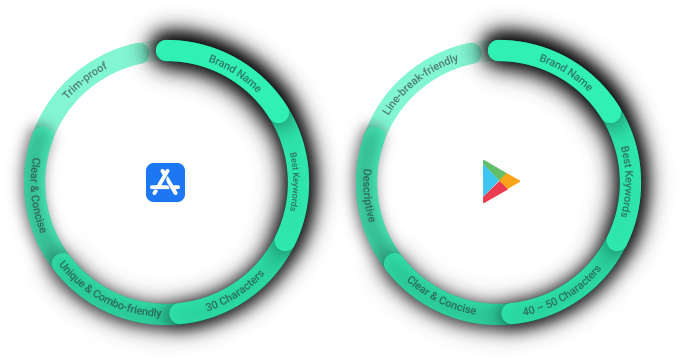
2. Subtitle (iOS) and Short Description (Android)
Looking at the first graphic, it is clear: the Subtitle in iOS and the Short Description in Android are an important ranking factor in the App Store and Google Play Store. Here you should avoid generic descriptions like “the best app in the world” and instead emphasize the features and added value your app offers its users. Start with a concise description of the app’s features, followed by an eye-catching paragraph that contains a short list of the app’s most important functions. Potential new users will be grateful if your app is displayed based on the keywords you are using that match their search criteria.
In iOS, the Subtitle is not a mandatory requirement. If you don’t make use of the 30 characters that are available here, the name of the app publisher will be displayed under the Title of the app. However, we recommend that you use this space to further improve the visibility of your app.
In Android, you have a maximum of 80 characters to motivate potential new users to download the app. You can use a Call-To-Action (CTA) (e.g. “Join the largest film-making community now!”), or a trigger directed at the user (e.g. “Can you solve the puzzle?”). By means of Store listing experiments, you can test which approach works best for your target group.
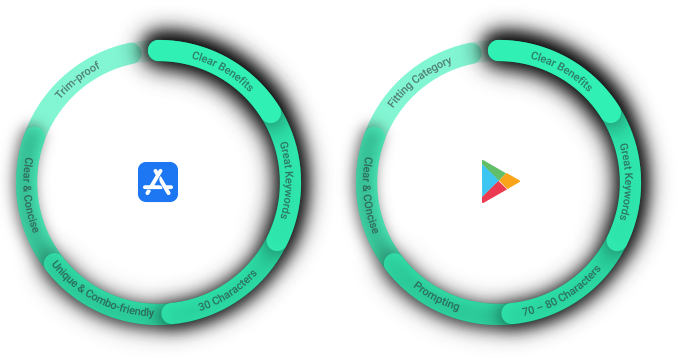
3. Long description
For the Long Description, you get 4000 characters in both App Stores – this means you have a lot of space to highlight the best features and functions of your app one more time. Use this opportunity to show the users how they can take full advantage of the potential of your app. A good structure is key: With subheadings you make it easier for your users to find relevant information quickly. Try to keep the Long Description consistent between iOS and Android (except for the emojis and HTML format).
The Long Description is only indexed by the Google Play Store algorithm, so you should pay special attention to the correct use of your keywords. We recommend you to use the relevant keywords as often as possible – whilst maintaining meaningful content.
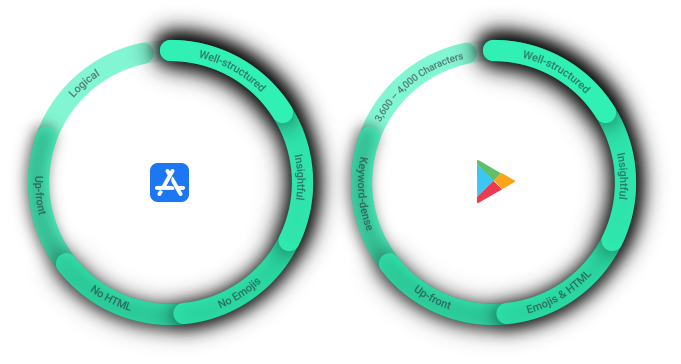
4. Keyword Set (iOS)
The Keyword Set is only visible to you in the App Store Connect (Apple’s developer console). App Store users or competitors will not see this field in the App Store. It is used to store keywords and is only a measure to improve the search ranking. Here you can store up to 100 characters per localization. Our tip for you: Separate the keywords with a comma only, this way you save additional spaces that only cost you unnecessary characters. Fill the keyword set with relevant keywords that are not part of your app Title or Subtitle. In the Keyword Set, 67% more keywords are stored than in the Title and Subtitle together.
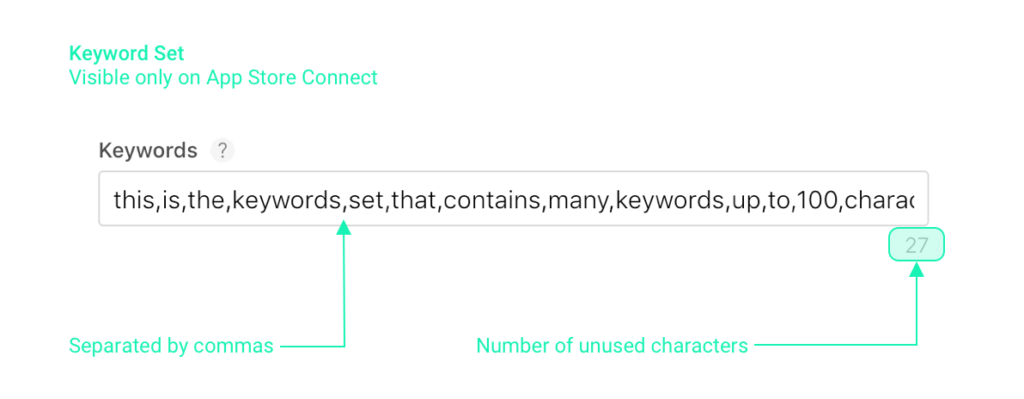

5. Promotional Text
The Promotional Text is another optional element in iOS – the text is displayed on your App Store page in the App Store. We recommend that you use the Promotional Text to get creative, promote limited offers or inform your users about new features of your app. Your creativity is free as you are least restricted by Apple’s guidelines.
So, try it out and get the most out of the 170 characters. If you feel there’s more to it, you can update the Promotional Text at any time without having to release a new version of your app, unlike the other elements on your App Store page.
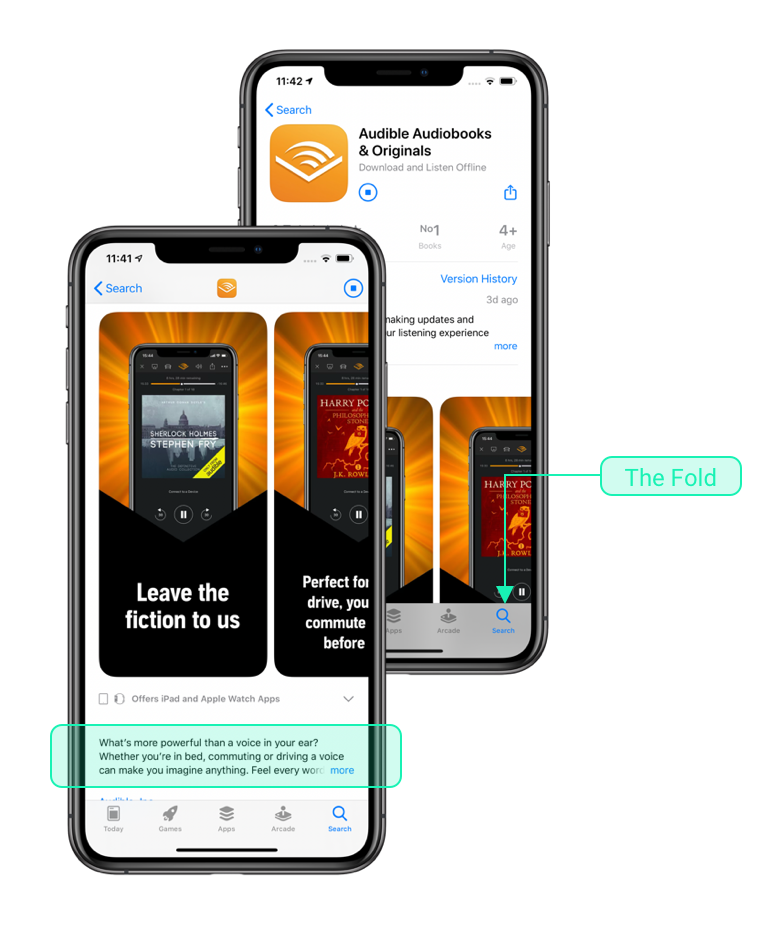
Adding this final step of the keyword optimization, you have all the resources you need to apply your hard-earned keywords from the first two steps correctly, create effective texts with them and place them in a way that will be beneficial for the rankings in iOS and Android. If you follow the tips in this article, you’ll be well-prepared to have your app appear higher up in the search results for all relevant keywords.
If you have further questions about optimizing your app appearance in the App Store or Google Play Store, please feel free to contact us at [email protected]. Our app marketing consultants have many years of experience in App Store Optimization and are always open for new and exciting projects!
💡 Knowledge sharing is at the core of what we do. Learn more about the app industry and discover useful resources by signing up for our newsletter or by bookmarking the Customlytics App Marketing blog in English or German.
📚 We love useful stuff. That’s why we co-wrote the Mobile Developer’s Guide to the Galaxy. Get your free paperback copy or download the eBook here providing you with all the mobile knowledge you need.
💜 Become part of our community on LinkedIn, Twitter, Xing, Glassdoor or Medium.



